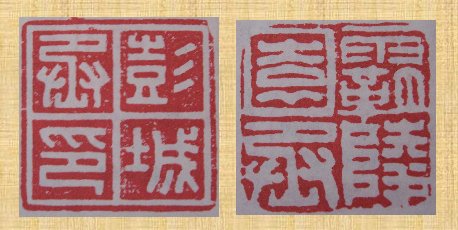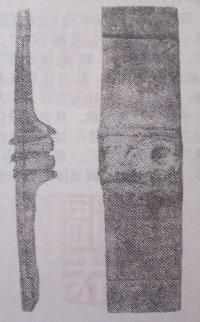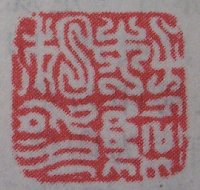
Chin (221 - 207 B.C.) & Han (206 B.C. - 220 A.D.) Dynasties
Chin
Dynasty (221-207 BC)
Between
the Zhou and Chin Dynasties, seals were very, very tiny and they were called
“Hsiao Mu” or “Chin Hsiao Mu.” The scripts of Hsiao Mu varied
drastically so most of them are not decipherable.
The scripts were close to Small
Zuan.

When
Chin Shu Huang, the first emperor of the Chin
Dynasty, unified China in 221 BC, he began using seals as symbols of
imperial authority. One of his seals, made of fine jade with a knob in the form
of a dragon, bore the inscription: "The Emperor glorious and long-lived,
the recipient of heaven's command".
Seals
became popular in the Chin Dynasty when people engraved their names on utensils
and documents to claim ownership or for verification of social status. At this
time, there were eight kinds of scripts used in the Chin Dynasty including Big
Zuan, Small Zuan, Worm Script, Li Shu, and etc. Chin Shu Huang set up a
governmental department to monitor Xi Seal and the feudal system of officials’
seals. He ordered the seals of the Emperor to be called “Xi” and must be
made of jade; the seals of the officials and people could only be made with
copper and be called “Inn.” Thus, “Inn” were used to distinguish the
ranks of officials.
Han Dynasty (206
BC - 220 AD)
During
the first year of Han Gao Zu’s reign (206 BC), he set up government operations
to make seals and symbols.
In the early West Han Dynasty, seal making followed the Chin Dynasty custom by adding columns or grids around the scripts.

In
121, Hsu Sen published “Suo Wen Je
Zu”. It’s a book that exemplifies revolution
of Chinese characters and it is a must for serious Zuan Shu calligraphers
and seal engravers.
During
the Han Dynasty, as paper became more popular people started to stain seal
engravings with colors, and then print them onto papers. For this purpose, red
ink paste was created. In ancient days, correspondences were usually written on
bamboo strips or wood rolls. To keep the contents confidential, people would tie
the bamboo strips together with strings and cover the bundle with a specially
designed wooden trough sealed with mud. A symbolic seal would then be pressed
against the mud to leave an identification mark. The seal engravings for this
purpose had to be done with deep carvings so that the markings would be clear
and firm. This is called the Mud Seal (“Fon Ni” or “Ni Fon”.)
| “河間王璽”是西漢早期的一件封泥。封泥是古代用印的遺跡。在紙張未發明或普遍使用的時代,各種文書多寫在竹木簡上。這些文書和貨物在傳遞過程中,往往要在結紮處加封印記,以防私拆。鈐有印文的泥團,就稱為“封泥”。 |

Side
and Upper Views of A Mud Seal
Up
to the Eastern Han Dynasty (25-330), the color of ink used to affix official
seals was regulated depending on the position of the owner. So officials had to
use green ink or other colors like purple or yellow.


Official
Seals in East Han Dynasty
In
both the Chin and Han Dynasties, seal engraving reached its peak and the works
became the learning resources for later seal engravers.